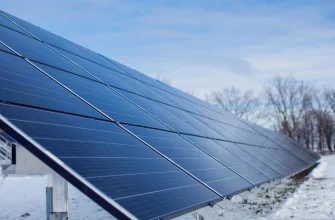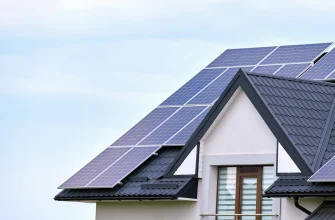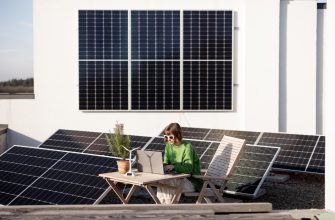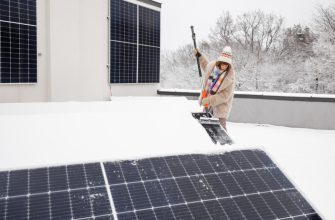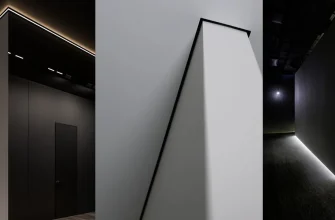What is alternative energy?
The term “alternative energy” does not yet have a clear and well-established definition, but it is generally considered to be energy sources that reduce or eliminate negative environmental impacts. For example, some sources point to the use of solar, wind and geothermal energy as the main components of alternative energy. Some believe that these are energy sources that do not harm the environment. However, some experts also include hydroelectric power plants, nuclear facilities, and even “clean coal” in this class, as CO2 emissions are minimal and do not create a significant footprint. However, the threat is not only from carbon dioxide, but also from other oxides (CO, SO2, NO, and others), which complicates the issue.
A more generalized understanding of alternative energy is that it is unconventional energy sources, such as solar, wind, geothermal, and biomass.
How do alternative sources differ from traditional ones?
Energy sources are divided into two main types: traditional and alternative. The traditional ones include fossil fuels (gas, oil, coal), while the alternative ones include everything that is a substitute for these resources (sun, water, wind). The key difference is renewability: traditional sources are exhaustible and eventually become unavailable, while alternative sources are infinite.
Another important difference is safety for humanity, wildlife and nature. Every year, humankind needs more and more electricity, which leads to increased water and air pollution and the formation of new ozone holes. This is mainly due to thermal power plants, which provide 50% of the world’s electricity. They significantly pollute the water bodies used for cooling and create toxic and radiation pollution. As a result, disease rates are rising, new infections are emerging, rare species are becoming extinct, and natural disasters are becoming more frequent.
That is why alternative renewable energy sources are becoming increasingly popular.

Types of alternative energy

Solar energy
Solar energy converts solar radiation into heat or electricity, depending on the type of installation. This includes solar power plants and solar systems, which are safe for the environment and can be used for billions of years. The main issue is the development of technologies for the conversion and accumulation of this resource.
Solar energy is one of the most promising and has been gaining ground in recent years.
An interesting fact: The sun’s energy would be enough to provide uninterrupted power supply to the entire planet.
Wind energy

Wind energy specializes in using the kinetic energy of the wind to generate other necessary energy. Wind is a modified form of solar energy, so it is also classified as an alternative renewable energy source. However, wind energy is inferior to solar energy both in terms of efficiency and popularity among the population, as wind resources are mostly located in places remote from consumers.
Interesting fact: One windmill with the right location can provide electricity for 1400 houses.
Hydropower
Hydropower uses the potential and kinetic energy of water to convert it into electrical energy. It is the most developed among other non-conventional energy sources. The potential of small rivers, tributaries and water supply systems provides energy independence to some remote areas. Advantages include short construction time, low investment, reliability, and accessibility.
Interesting fact: Water was one of the first sources of electricity generation.
Biofuels
Biofuels are organic fuels derived from plant, animal, agricultural, or industrial waste. It is renewable and safe for the environment. It includes wood products, alcohol mixtures, ethers, biodiesel, and various gas combinations.
The best alternative heating and power supply systems for the home in 2020
Solar power plant
Solar power plants remain leaders among alternative energy sources for homes. The development of technologies makes them more accessible, and 2020 was a breakthrough year in the development of autonomous solar energy.
The main obstacle to energy independence with the help of the sun is the problem of electricity storage. Gel, multi-gel, and carbon batteries last from one to three years, after which they need to be replaced, which is not cheap. Therefore, it is easier to use the general power grid. However, Pylon Technologies has shown that rechargeable batteries can last much longer – the official warranty from the manufacturer is more than 10 years. Thus, by contacting qualified specialists, you can choose high-quality equipment and ensure uninterrupted power supply.
Solar energy is a great option not only for small households. Manufacturing companies also increase their profitability by installing autonomous solar power plants, which allow them to fix the tariff at 50 kopecks per 1 kW.
Solar collector
Solar solar systems are usually installed at facilities with high hot water consumption, such as in the textile and food industries, as well as in hotels and recreation centers. They are also popular among owners of private houses and apartments, as they can save up to 50% of gas or electricity. The simplest 100-liter system costs about $1,000.
Wind generator
A wind generator for a home is a good solution if there is no connection to the power grid or if there are frequent interruptions in its operation. However, if the power supply is stable, such an investment becomes unprofitable.
When planning the installation of a wind turbine, you need to take into account the average annual wind speed, which should be more than 4-4.5 m/s (14.4-16.2 km/h). Such indicators are usually achieved in mountainous areas, steppe zones, or on the coasts. It is also important to avoid the presence of tall trees or buildings nearby that can create a wind shadow. If this is not possible, the structure must be raised to a higher height, which requires additional costs.
The next step is to contact the local authorities to clarify permits and requirements. Your structure should not interfere with small aircraft, telecommunications, or radio communications, and the noise level should be within the normal range. You also need to coordinate these issues with your neighbors and obtain their permission.
A wind turbine requires maintenance, so if you want to do everything once and not worry about maintenance, you should choose another alternative energy option.
Heat pump
A heat pump can save more than 50% on home heating and provides independence from resource prices, as it operates down to -7°C without backup sources. However, this statement applies to certain heat pump models and depends on many factors, such as the regional climate and system efficiency. There are four types of energy sources for heat pumps:
- Groundwater. The most popular type that accumulates ground heat to heat water in heating or plumbing systems.
- Air-to-water. Uses the thermal energy of the air to heat water.
- Air-to-air. Air energy is used directly for heating and air conditioning.
- Water-water. The source is groundwater or reservoirs, the heat of which is directed to hot water supply and heating.
The main advantage of heat pumps is full automation: they work autonomously, without the need for intervention. The system adapts individually to a specific room and will last for many years, providing heating and cooling without harming the environment.
The only drawback is the high initial cost, but such an investment will quickly pay off. If you have the opportunity to install a heat pump, it is a good choice, as it will help you save money and reduce your environmental footprint.


